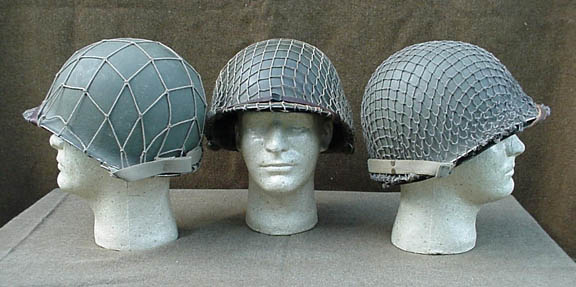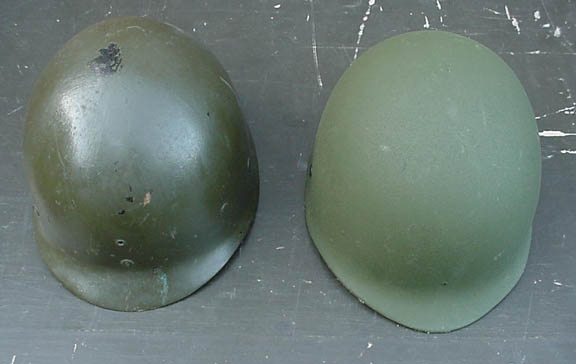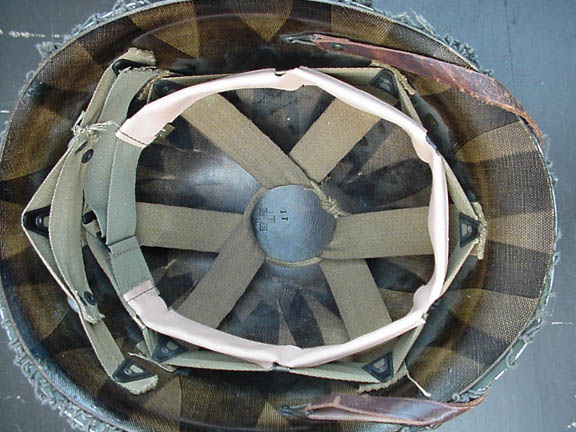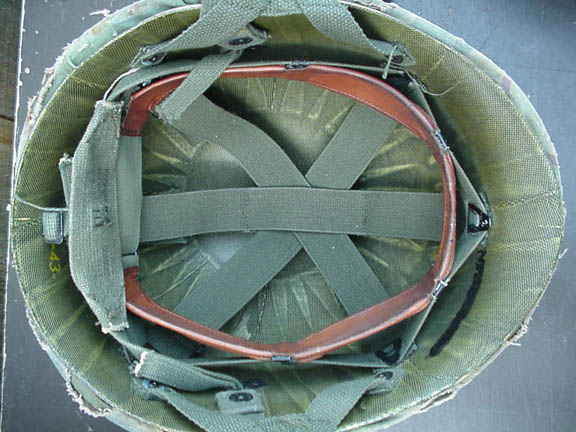
The M-1 Helmet

Three views of the M-1 Helmet. Note the different nets used, and the matt greenish-olive drab paint. Also note the khaki or greenish-khaki webbing used on the chin strap, and the small brown leather liner chin strap, which is normally worn over the front rim of the helmet. The webbing chin strap, which is attached to the helmet shell or "steel pot" is sewn onto "bails" that are welded to the steel helmet. The US Army used this helmet from the early 1940s well into the 1980s with only minor changes.

Comparison of a World War II helmet liner on the left, and a Vietnam-era helmet liner on the right. Note the typical olive drab color of the WWII liner and the "pea-green" color of the Vietnam liner. Also note the grommet on the front of the WWII liner, and the slightly different shape of the two.

View of the inside of a WWII helmet liner. Note the brownish color of the fiber shell, the neck or "nape" strap (on the left in this photo), the method of adjusting the depth of the webbing - a simple string, and the attachment studs for the leather liner chin strap. Also note the khaki or greenish-khaki color of the webbing. Later war helmets could be found with darker green webbing or a combination of khaki and dark green. Note: The leather sweatband is a modern reproduction.

View of the inside of a Vietnam-era helmet liner. Note the green color of the fiber liner and webbing. Note the difference in the nape strap and depth adjustment, and the lack of the attaching studs for the leather liner chin strap which was deleted from use. The dark green webbing is not that far from the color of the late WWII webbing, but the construction of the liner is very different. Also note that this is an airborne helmet liner which accounts for the extra webbing on the sides of the helmet.

A slightly blurry close-up of the front split on the rim of a World War II helmet. More modern helmets have the split in the rear. At least one source indicates that helmets with the rear split and "OD Number 7" medium-green chin straps were manufactured beginning in November, 1944, but if you find one with the split in front, it is a sure-fire indicator that it is a WWII helmet. The difference is minimal, and front or rear split rims are fine for reenacting purposes as long as the helmet is the correct color with the correct webbing chin strap.